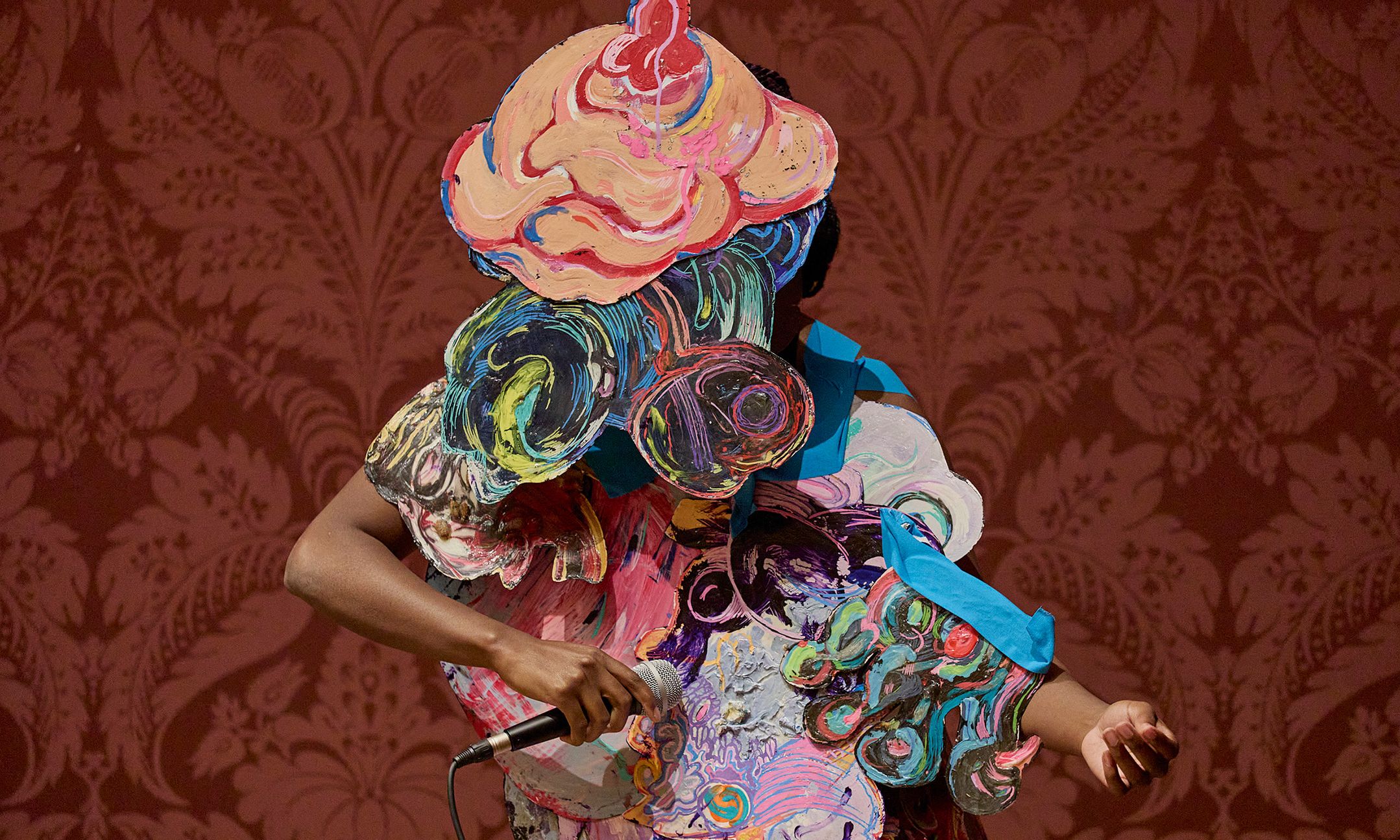Factual Actual by Florence Peake, a performance project celebrating the exhibition Poussin and the Dance in 2021-22 Photo: © The National Gallery, London
Few national museums have an artist studio on site, but the National Gallery does—right next to the conservation department. Since 1990, the gallery’s various residency programmes have invited artists to produce a significant work in response to the collection. Today’s Artist in Residence scheme is the only European residency of its kind which offers a stipend for caring responsibilities.
“It was like playing for England,” the Coventry-born artist George Shaw exclaimed after his residency in 2014. Among 50 other works, Shaw made a triptych which depicted a woodland where the debris of teenage debauchery is discovered in the daytime. It was his hat-tip to Titian’s Diana and Actaeon (1556-59): he found inspiration in the Venetian master’s Actaeon stumbling upon the secret place of Diana, chaste goddess of the hunt, and finding her naked, for his own scene of crossing over from innocence into experience. “Even the religious paintings eventually get down from their high horse and meet you on your level,” Shaw said. “It’s all sex, death, bowls of fruit and flowers, and the odd landscape; that may sound somewhat dismissive, but it’s kept artists busy for 700 years and continues to do so.”
Bridget Riley produced an expansive work called Messengers in 2019 that was dedicated to the museum’s collection Neil Spence / Alamy Stock Photo
If you enter the National Gallery from the Annenberg Court, expecting only Old Master history paintings in gilt frames, you might be surprised by what is painted directly on to the wall. Spanning a vast 10m x 20m, there is a perplexing abstract work, comprised of a smattering of coloured discs on a white background. Bridget Riley’s expansive commission, Messengers (2019), is dedicated to the collection, taking as its starting point (ahem) the Pointillist style of George Seurat’s Bathers at Asnières (1884), bought using the Courtauld Fund in 1924. Most of all, though, this is a homage to the gallery favourite John Constable, who practised painting “messenger clouds”, known today as scud or fractus clouds, while working en plein air on Hampstead Heath, in north London. Riley, who made copies of Jan van Eyck’s Portrait of a Man (Self Portrait?) (1433) while putting together her portfolio at Goldsmiths College after the Second World War, has had a long relationship with the National Gallery despite being an abstract painter. She was invited to select The Artist’s Eye exhibition in 1989, and was the subject of the exhibition Bridget Riley: Paintings and Related Work, in 2010-11.
To celebrate the 2021-22 winter exhibition, Poussin and the Dance, four contemporary artists—Florence Peake, Hetain Patel, Zadie Xa and Benito Mayor Vallejo—explored Poussin as a history painter who recognised the joy in telling stories through dance, movement and dramatic choreography. Peake’s Factual Actual project was particularly loved, and featured gigantic and expressively painted canvases folded, hurled and suspended by five dancers, which created immersive sculptures. Peake was particularly interested in the metaphorical possibilities of “collapse”, from dropping to one’s knees in dance to canvases drooping and caving in—and perhaps even the collapse of the canon of white Western classical painting that hangs on the gallery’s walls.

